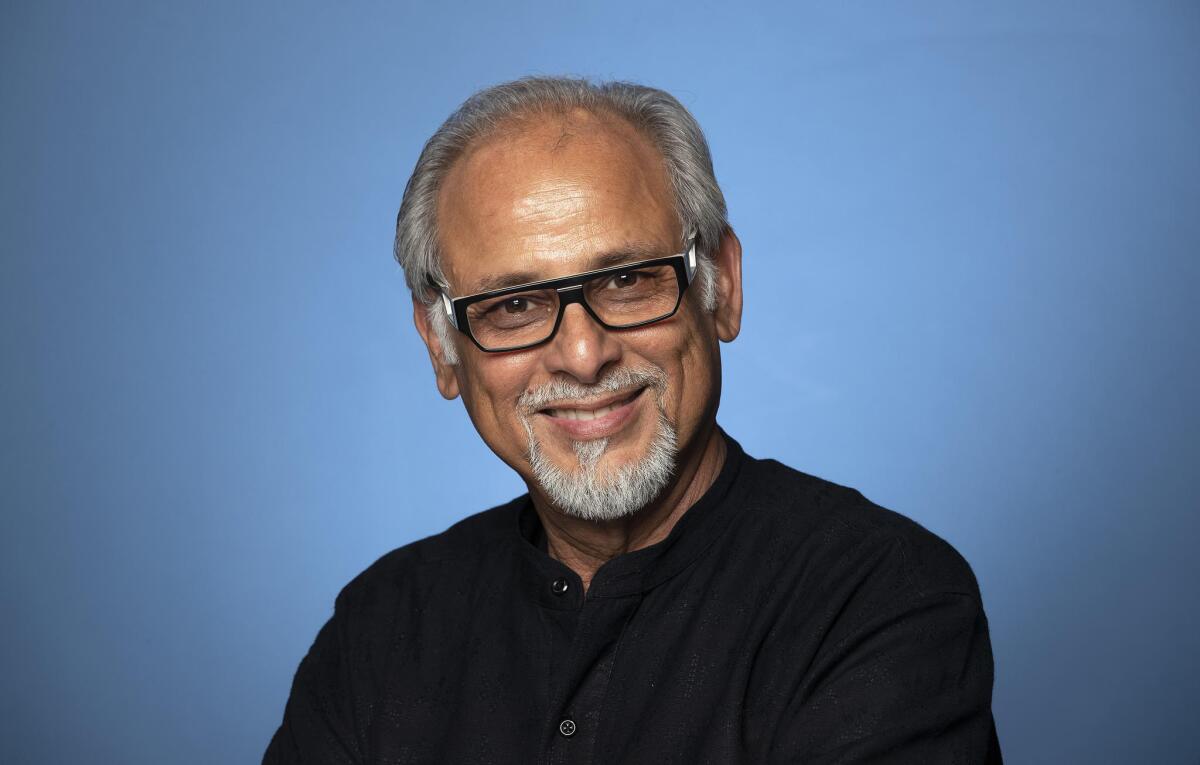Times Photographer Irfan Khan Honored with Distinguished Journalist Award

- Share via
The Society of Professional Journalists Greater Los Angeles chapter recently honored Los Angeles Times Photographer Irfan Khan with the Distinguished Journalist award. The award, which honors journalists who have produced an impressive body of work and demonstrated a deep commitment to their craft, was presented at a virtual ceremony on Nov. 4.
Times Metro Reporter Brittny Mejia introduced Khan during the ceremony, calling him “a constant source of inspiration.
“To describe Irfan as energetic would be an understatement,” she said, explaining how Khan had recently used his ingenuity and persistence to gain access to an intensive care unit in Victorville to provide up close coverage of the coronavirus pandemic. “[His] brain is always working, coming up with story ideas, getting us access into unlikely places . . . he’s one of the best journalists that I know.”
In accepting the award, Khan recalled when he and his family relocated from Dubai to Los Angeles three decades ago. In Dubai, he’d worked for an advertising agency and a leading English-language newspaper. “I came from a society where freedom of press is not always guaranteed,” he said. “To meet fellow journalists whose daily work is a celebration of the First Amendment is nothing short of remarkable.”
Khan joined The Times full-time in 1996. His assignments have taken him across Southern California and the globe. He has photographed the Hajj in Saudi Arabia and war zones of the Pakistan/Afghanistan border in the aftermath of the Sept. 11, 2001 attacks. And he was part of the team awarded the Pulitzer Prize in breaking news for coverage of the 2015 terrorist attack in San Bernardino.
In reflecting on his long career with The Times, Khan said he’s had many memorable days on the job. One of his most challenging days in recent years came in May of 2019, when he was working on a Column One with Reporter Ruben Vives about fighter jets flying through a canyon in Death Valley, attracting military veterans, aviation enthusiasts and photographers. Photographers gather on mountain tops and parking lots along the canyon to capture the jets.
“My aim was to get one of the jets and people in one photo,” Khan said. “I asked many photographers there if that was possible, and everyone’s response was negative.”
Khan set out to prove the naysayers wrong. “It was a do or die matter for me,” he said. After going to bed in his hotel room thinking about how to get the shot, Khan said he convinced Vives to join him in his plan the next morning. At 8 a.m., the duo claimed a mountain that Khan said he hoped would be the perfect spot to capture the other people, and the jets, in one line. As Vives departed to report his story, Khan stood alone on top of the mountain for several hours, braving the wind, hoping for his prized photo.

To his disappointment, “when I was attending to a call of nature, around 3 p.m., a plane appears perfect in line, but I missed it,” he said. “I was dejected by missing the opportunity and starting crying, ‘why me?’”
But suddenly, at 3:20 p.m., another jet appeared seemingly out of nowhere “and this time I nailed the shot,” he said. The photograph became the cover photo on The Times’ front page.
“That’s definitely one of the most memorable photos I’ve taken in recent years,” he said.
Read more about the SPJ/LA Distinguished Journalist Awards at spjla.org and view video of the ceremony here.



